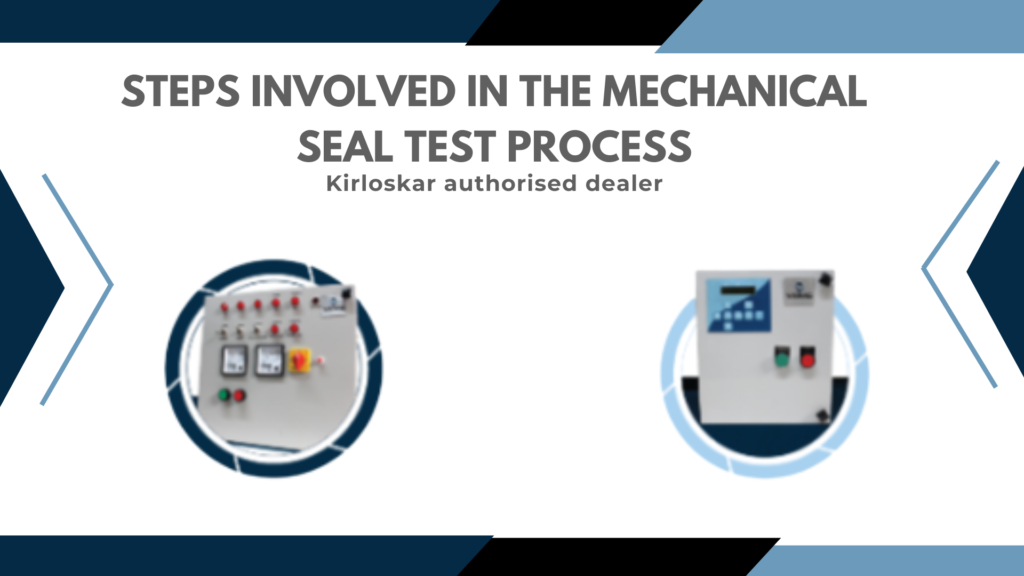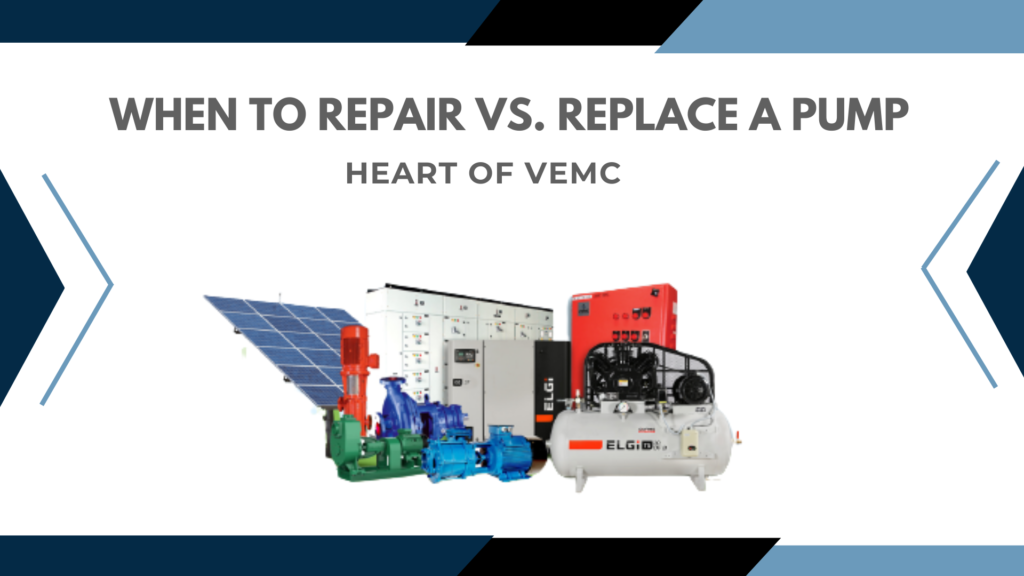
If you are a pump owner, you must be on top of all the processes and techniques of pump maintenance. One such crucial process is the mechanical seal testing. Mechanical seals control leakage of liquids in pumps and other rotating devices. The purpose of testing therefore is to analyse its effectiveness in preventing leakage at various speeds and sizes. VEMC is the leading Kirloskar dealer in Mumbai, and in this blog we tell you all you need to know about mechanical seal testing.
Testing process
- Preparation:
Mechanical seals are tested in accordance with the API standard 682. This requires that all the seal types (A, B and C) be tested in all seal arrangements, single seal, pressure-less and pressurized dual seal. It specifies tests with diameters of 50 mm and 100 mm and speed of 3600 rpm. Further, each seal must be tested with four different media.
- Dynamic phase:
The dynamic phase of the mechanical seal test is conducted at a constant pressure and temperature at the speed of 3600 rpm. The test has to be performed for more than 100 hours at base point conditions.
- Static phase:
The static phase of mechanical seal testing takes place at constant pressure and temperature at 0 rpm for 4 hours.
- Cyclic phase:
Tests are conducted at base point conditions at a speed of 3600 rpm till equillibrium is attained.
After this, the seal chamber pressure is dropped to 0 psi so as to vapourise the fluid. Base point pressure is then re-established.
Next, the seal chamber fluid temperature is dropped to 20 degrees C and then base temperature is re-established.
Finally, the fluid temperature in the seal chamber is raised to 80 degrees C, seal flush turned off for 1 minute and then the test is shut down (0 rpm) for 10 minutes.
Preventive measures to maintain the integrity of your mechanical seals
Leaking mechanical seals could be a source of serious housekeeping hazard, health concerns and business issues in your facility. To avoid repeated mechanical seal testing, it would be best to maintain it using some very simple but effective ways:
- Choose a mechanical seal based on your weather conditions.
- The liquids being pumped are also vulnerable to changes in pressure, temperature etc. Although most liquids act as lubricants for your seals, nevertheless being aware of their nature helps you choose better.
- Be aware of the actual nature of leakage through a seal. This could be due to a shaft that has bent or bad bearings.
- Try to reduce pump vibrations as much as possible. Excessive vibration contributes to the cavitation of pump body and deterioration of component parts like seals.
- Finally, rather than running the pump dry, make sure you maintain proper lubrication.
For more on the maintenance and testing of your pumps’ mechanical seals, feel free to call VEMC on 022 43436655 or email us at marketing@vemc.co.in. We are the top-notch Kirloskar authorised dealer in Mumbai.


